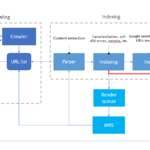Applications of Polymers in Parenteral Drug Delivery
Parenteral drug delivery refers to methods of administering drugs directly into the body, bypassing the digestive system, most commonly through intravenous (IV), subcutaneous (SC), or intramuscular (IM) injections. With advancements in polymer technology, polymers have become crucial in the development of sophisticated drug delivery systems, especially for prolonged and controlled drug release.
This article will delve into the multiple roles polymers play in parenteral drug delivery systems, emphasizing their various applications, types, and the critical considerations for successful drug formulation.
-
Introduction to Parenteral Drug Delivery
Oral drug delivery has long been the most popular method for administering medication due to its ease of use. However, oral delivery systems face several limitations, particularly for drugs that undergo extensive first-pass metabolism or have poor bioavailability due to absorption variability in the gastrointestinal (GI) tract. To overcome these issues, parenteral drug delivery has emerged as an effective method for administering drugs that require rapid action or sustained release, especially in chronic and critical conditions.
Polymers have revolutionized this field by offering controlled drug release mechanisms that can maintain therapeutic levels over extended periods, reducing dosing frequency and enhancing patient compliance.
-
The Role of Polymers in Parenteral Drug Delivery
Polymers in parenteral drug delivery can be classified based on their role:
2.1. Polymers as Drugs
In certain instances, polymers themselves act as therapeutic agents. For example, plasma-volume expanders, such as albumin, dextran, or starch-based solutions, are used to increase blood volume during hemorrhage or circulatory shock. Additionally, polyoxyethylene-polyoxypropylene block copolymer has hemorheological properties beneficial in conditions like myocardial infarction and thrombotic disorders.
2.2. Polymers as Nonbiofunctional Excipients
These polymers serve a supportive role in drug formulations but do not actively participate in drug release or alter the pharmacokinetics of the drug. Examples include polyethylene glycol (PEG), which is used in suspensions as a stabilizer. For instance, PEG 3350 is used in methylprednisolone acetate injectable suspensions (DEPO-MEDROL) to maintain stability.
2.3. Polymers as Biofunctional Excipients
Polymers can also serve a more active role in drug delivery, influencing the release kinetics and pharmacodynamics of the drug. Biofunctional excipients can include polymers used for controlled drug release, such as those in long-acting injectables (LAIs). Polymers can encapsulate drugs, providing sustained release and improving therapeutic outcomes by maintaining drug concentrations within the therapeutic window over extended periods.
-
Types of Polymeric Systems in Parenteral Drug Delivery
Polymers play a critical role in various advanced drug delivery systems, each tailored to specific therapeutic needs:
3.1. Polymeric Implants
Solid or in situ-forming implants made from biodegradable or non-biodegradable polymers offer prolonged drug release, sometimes lasting for years. Biodegradable implants eliminate the need for surgical removal, unlike older, non-biodegradable implants. Examples of successful applications include contraceptive implants like Jadelle and Nexplanon, which provide hormonal birth control for three to five years.
3.2. Injectable Microspheres
Microspheres made from polymers such as PLGA (poly(lactic-co-glycolic acid)) have become a mainstay in the delivery of long-acting injectables. These systems are commonly used for peptide hormone therapies like Lupron Depot, where the encapsulated drug is released over one to six months. Microspheres can also be used for the delivery of anticancer agents and vaccines.
3.3. Nanoparticulate Systems
Nanoparticles made from polymers offer enhanced therapeutic outcomes by improving the pharmacokinetics of drugs and targeting specific tissues or cells. For example, Abraxane, an albumin-bound nanoparticle formulation of paclitaxel, is used to treat cancer more effectively by improving drug solubility and reducing systemic toxicity.
3.4. Hydrogels
Hydrogels are hydrophilic polymer networks that can absorb large quantities of water, making them ideal for localized drug delivery systems, such as injectable gels. Hydrogels have been widely investigated for applications in tissue engineering and sustained drug release systems for conditions like osteoarthritis and other joint-related diseases.
-
Considerations for Polymer-Based Parenteral Drug Delivery Systems
Several factors influence the effectiveness of polymer-based parenteral drug delivery systems:
4.1. Biodegradability and Biocompatibility
Polymers must be biodegradable to ensure they do not accumulate in the body and must break down into non-toxic by-products that can be eliminated easily. Moreover, polymers must be biocompatible to avoid triggering adverse immune responses. Polymers such as PLA (polylactic acid) and PLGA have become popular due to their established biocompatibility and controlled degradation profiles.
4.2. Drug Loading Capacity
The ability of the polymer matrix to encapsulate sufficient quantities of the drug is critical for prolonged release systems. Higher drug loading can lead to a faster initial release of the drug, but this needs to be balanced with the intended release kinetics to maintain therapeutic efficacy over time.
4.3. In Vivo Stability
Polymers must exhibit stability under physiological conditions to ensure that the drug remains encapsulated until its scheduled release. Factors such as molecular weight, crystallinity, and hydrophobicity can influence the polymer’s degradation rate, which directly affects the release profile of the drug.
4.4. Surface Properties and Particle Size
For particulate systems like nanoparticles and microspheres, the size and surface charge of the polymer particles are critical factors influencing drug delivery. Smaller particles are more easily taken up by cells through endocytosis, while surface modifications, such as PEGylation, can improve circulation time by reducing clearance by the reticuloendothelial system (RES).
-
Examples of Polymers in Parenteral Drug Delivery
5.1. Biodegradable Polymers
Biodegradable polymers like PLA, PLGA, and PCL (polycaprolactone) are extensively used in parenteral drug delivery systems. PLGA is particularly valued due to its tunable degradation rate, which can be controlled by adjusting the ratio of lactic acid to glycolic acid in the polymer. These polymers degrade in vivo into lactic acid and glycolic acid, which are naturally metabolized by the body.
Example: PLGA Microspheres
PLGA microspheres are used to deliver peptide-based drugs, such as leuprolide acetate (Lupron Depot), providing sustained release for several months.
5.2. Non-Biodegradable Polymers
Non-biodegradable polymers like ethylene vinyl acetate (EVA) and silicone elastomers have been used in drug delivery systems but require surgical removal after the drug is depleted. However, they are still employed in certain applications where a slow, diffusion-controlled release is desired.
5.3. Natural Polymers
Natural polymers such as albumin, collagen, and gelatine are also utilized in parenteral drug delivery systems. These proteins are biocompatible and can be easily modified for controlled release systems. Albumin-bound nanoparticles, such as in Abraxane, enhance drug delivery and improve solubility for hydrophobic drugs.
-
Advanced Polymeric Systems and Future Directions
With continuous advancements in polymer science, the future of parenteral drug delivery systems lies in developing polymers that respond to external stimuli, such as pH, temperature, or enzymes, to release drugs at specific times or locations in the body. These “smart” polymers could further improve targeted drug delivery, particularly for cancer therapy and personalized medicine.
Moreover, biodegradable in situ forming systems, such as hydrogels or implants that form upon injection, offer new possibilities for minimally invasive drug delivery. Research in triblock copolymers like PLGA-PEG-PLGA is underway to develop injectable systems that can solidify at body temperature and release drugs in a controlled manner without the need for surgery.
Conclusion
Polymers have transformed the field of parenteral drug delivery by enabling the development of sophisticated systems that provide controlled and sustained drug release. From biodegradable implants to nanoparticulate systems, polymers offer numerous advantages, including improved patient compliance, reduced dosing frequency, and enhanced therapeutic outcomes. As polymer science continues to advance, the applications of polymers in drug delivery will expand, offering even greater precision and efficacy in treating various medical conditions.









